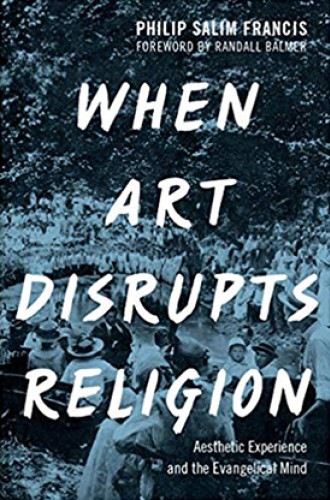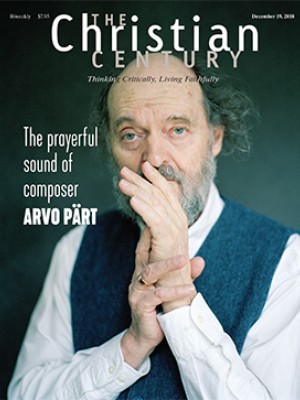Bridging the gulf between conservative Christian colleges and the arts
Does immersion in secular music and literature strengthen faith? Does it destroy it?
Students encountering Plato’s Republic for the first time often recoil at the strict censorship imposed first on the training of the guardians, then on everyone else for good measure. Poetry and music corrode and corrupt the soul, Plato insists, and threaten to upset society’s delicate moral balance. Only morally uplifting art—poetry extolling the virtues, music that connotes brave warriors going to battle—has a place in the ideal state.
Plato was wrong, I explain to students, precisely because he was right. His strictures on poets and musicians are impossibly narrow, yes, and conducive more to boredom than to virtue. But he was right that art challenges and disrupts the moral and political status quo. If your goal is to build a perfect society and freeze it in place, watch out for the artists.
Read our latest issue or browse back issues.
From the early church to the present, friends of Plato have occupied pulpits and warned their flock of the pitfalls and temptations of art. Iconoclasts in the first millennium destroyed holy images in order to uphold true worship. Seventeenth-century Calvinists whitewashed biblical scenes painted on church walls and smashed statues of saints. Instruments to accompany singing are still sometimes banned as Satan’s helpers. Sermons inveighing against the evils of contemporary genres of art—rock music, films and plays that address controversial issues, realistic fiction—can be heard each Sunday.
Philip Salim Francis heard this message clearly in the evangelical church in which he was raised and during his years at Gordon College. But he also found his way to an unusual spinoff from the Christian college community: the Oregon Extension, a semester-long residential study program founded in 1975 by a few faculty members at Trinity College (now Trinity International University) in Deerfield, Illinois. The program invites students to explore both the wilderness of the Northwest and the untracked and perhaps equally unfamiliar regions of critical reflection on Christian faith and practice. Its emphasis is on study of challenging works of fiction and poetry. Its effect, on Francis and on most other participants over four decades, is a fundamental reassessment of what it means to be a follower of Jesus.
Some 15 years after he returned to Massachusetts from Oregon, Francis set out to explore just what it was that made the Oregon experience so formative. Looking for other examples of the same sort of spiritual encounter with the arts, he selected the School of Fine Arts and Communication at Bob Jones University, where in the early 1960s a faculty member who had studied under Josef Albers and Willem de Kooning began promoting abstract art as a means of glorifying God. Over the past half century, the art school at Bob Jones has given both artistic and spiritual direction to many students who went on to successful careers in the arts.
The two programs seem worlds apart, on the surface: a collective of left-leaning students and faculty in the forests of Oregon and a program housed at one of the nation’s most proudly fundamentalist universities in the Carolina Piedmont. At the Oregon Extension, from the reports I hear, feminism and antiracism are served with the organic granola and sustainably sourced rain forest coffee for breakfast. At Bob Jones, on the other hand, interracial dating was banned into the 1980s, pants on women until the 2000s. Yet in both instances—as Randall Balmer observes in his foreword to this study—students discovered that “artistic appreciation, artistic immersion, and artistic expression” could “liberate them from the constraints of fundamentalism.”
Francis’s study is not easy to categorize. It aspires to the category of anthropology: his first chapter describes the two “field sites,” and on nearly every page he quotes from extensive interviews with about 50 graduates of each program to corroborate his observations. There are elements of memoir: the story that the students relate often describes the author’s journey as well, and Francis acknowledges explicitly that his observations have been shaped by his own experience. For its theoretical framework Francis relies on an unusual assortment of sources, most prominently the American pragmatist philosophers William James and John Dewey and feminist philosopher and social theorist Judith Butler. Elaine Scarry, Alexander Nehamas, and even Sigmund Freud make cameo appearances.
The author’s need to fit the stories into a theoretical framework sometimes creates more fog than light. James’s concept of “generative passivity,” a key to understanding personal transformations, is never clearly explained. When Butler posits “differing and deferring” as modes of resistance to prevailing norms, and Francis explains that these are “iterations [that] signify and establish alternative fragments of subjectivity,” what does this clarify?
More clarity is contributed by Francis’s emphasis on ritual, practice, and membership in a community of meaning as key factors both in sustaining and in challenging religious belief. Fundamentalist communities engage in shared practices such as evangelizing strangers, discounting any signs of doubt, and dwelling on the joys of heaven and the torments of hell. These, Francis suggests, are their “practices of certainty.”
When they immersed themselves in the arts, students from conservative backgrounds embraced new rituals of exploration and transformation. Novels convey a wide range of religious and philosophical perspectives—one informant reports that they “humanized non-Christians for me.” Art that has no pictorial subject, or whose subject has sexual elements, unsettles aesthetic value systems. Art criticism and literary criticism generate critical thinking in the realm of theology too. For most of the students, Francis writes, “the arts became a way of knowing and unknowing that occasioned and heightened the experience of uncertainty, while making it a livable space.”
On a hike in the Northwestern forests, paths often diverge and lead to different destinations. The paths followed by Francis’s subjects have led most of them to the same destination: a break with religious roots, together with a measure of uncertainty and skepticism. Some have become more critical and discerning believers, while others have left the fold. Not coincidentally, this seems to be the destination the author has reached too—appreciative of the wisdom and formative influence of conservative Christianity but unable to affirm many of its doctrinal tenets or moral strictures.
The journey from certainty to uncertainty is both a gain and a loss. A strength of Francis’s study is his probing exploration of the why neither his informants, nor he himself, can look back without regret. He writes: “The loss of God is incomparably great. The loss of God is the loss of nothing at all. It may be this stark contrast that makes the work of mourning the loss of God so difficult.” For several of his subjects, Francis observes, art is closely intertwined with this ambivalent attitude: they “go beyond the claim that art comforted them in their loss and suggest that their own artistic production was both a symptom of and a cure for their religious losses.”
The scope of Francis’s study is rather narrow—just two programs bridging the gulf between conservative Christian higher education and the arts—and his efforts to avoid prejudgment and stereotype do not always succeed. (A telling entry in the index is the only item listed under “certainty:” “see ‘Absolute certainty, overcoming need for.’”) Nevertheless his account offers valuable insights and a rich selection of moving personal narratives about the fraught relationship between the church world and the art world.







